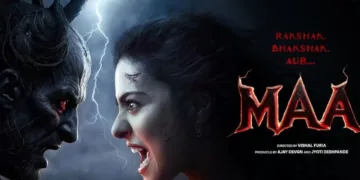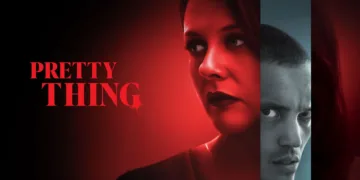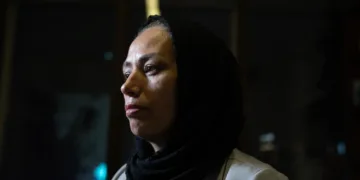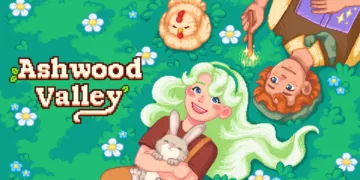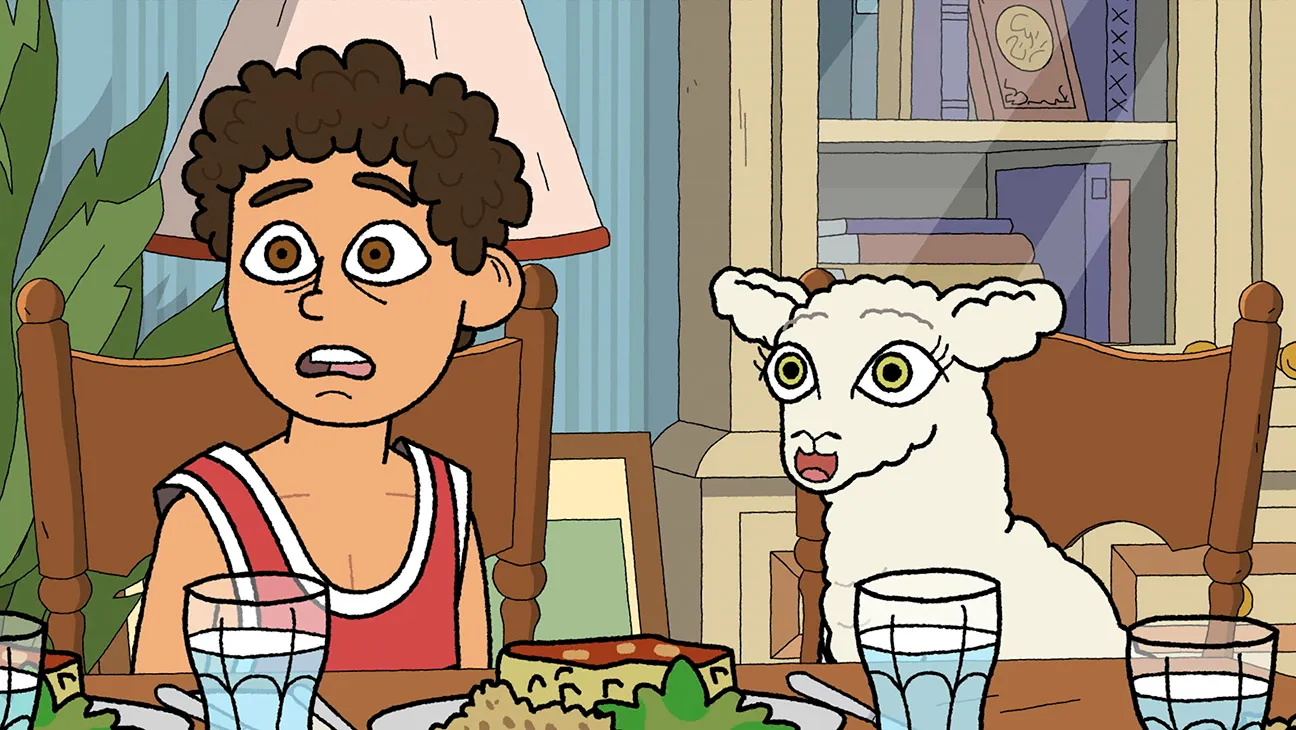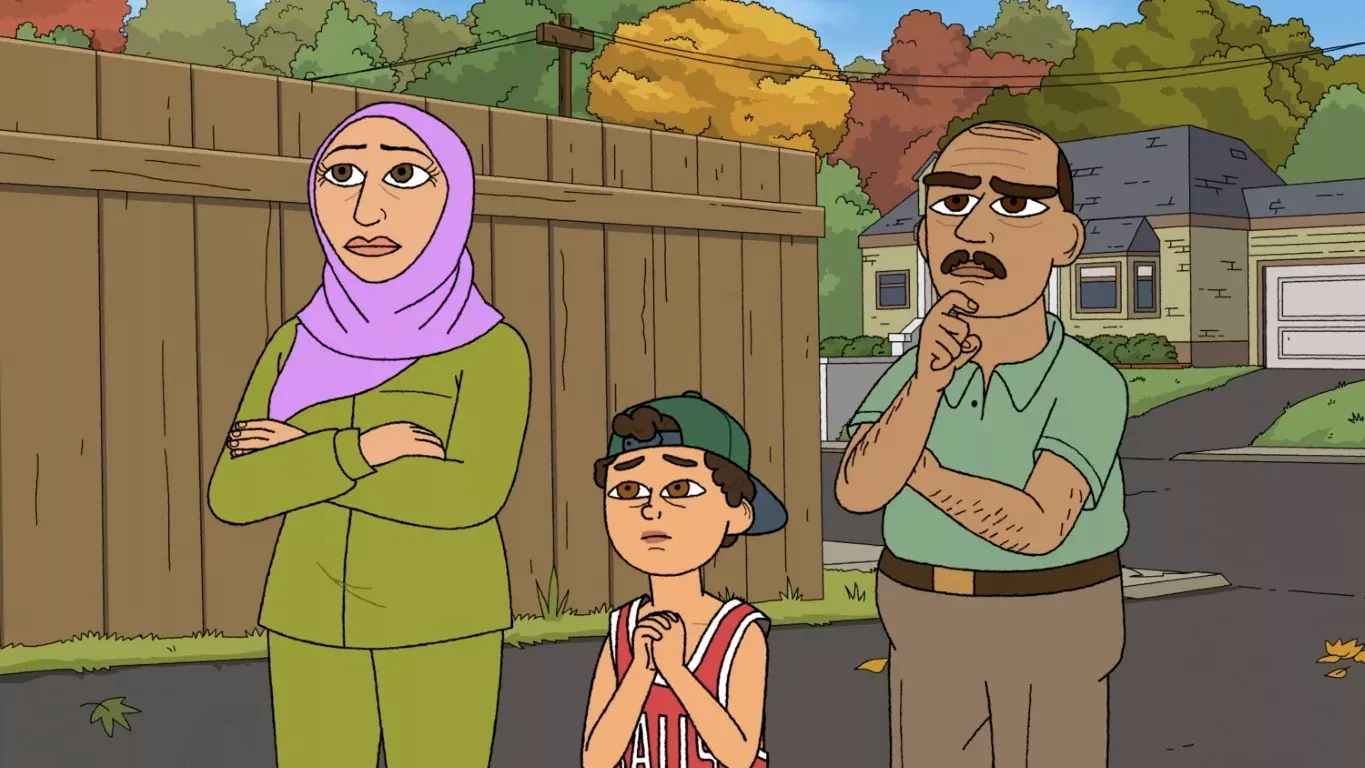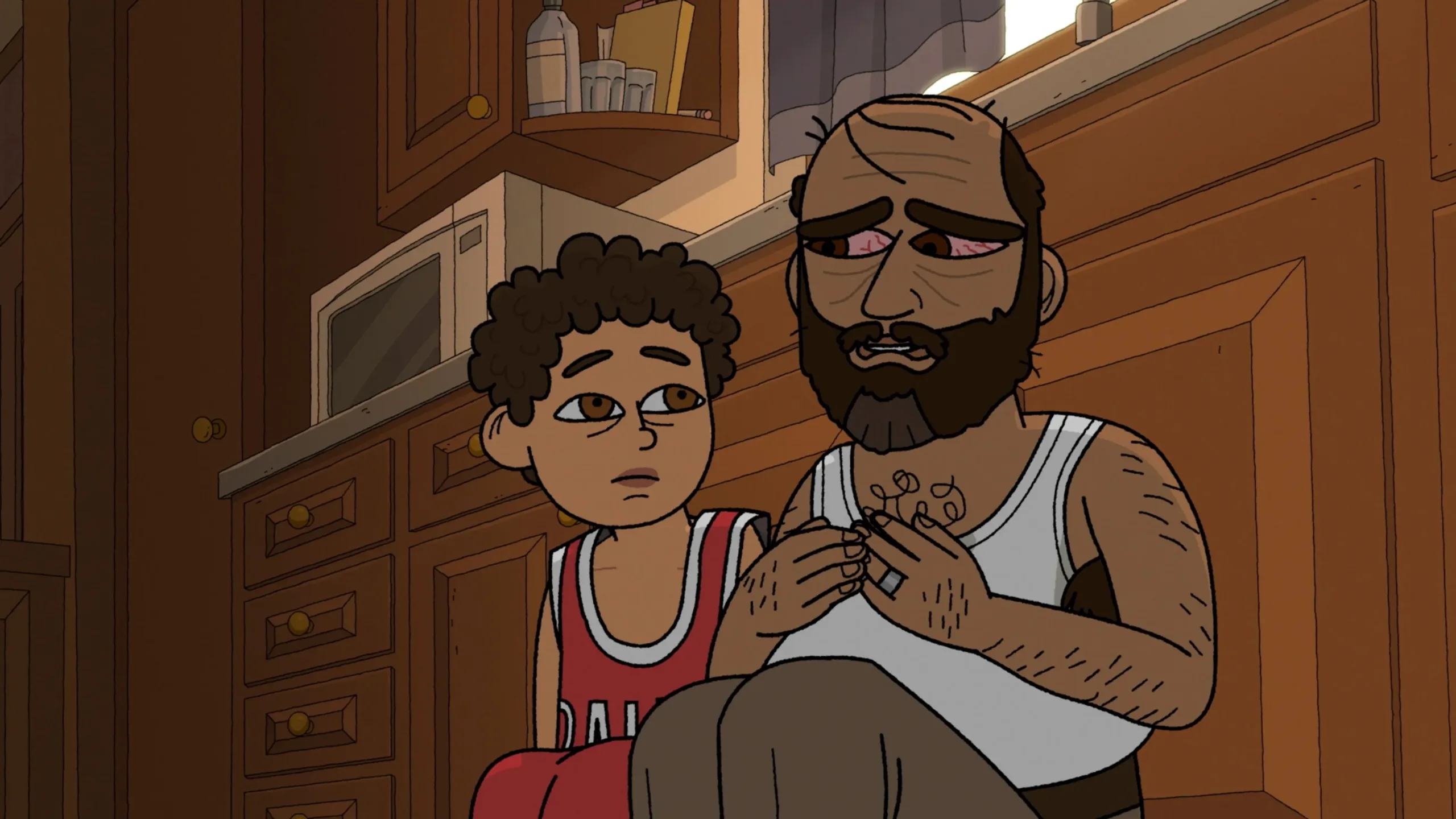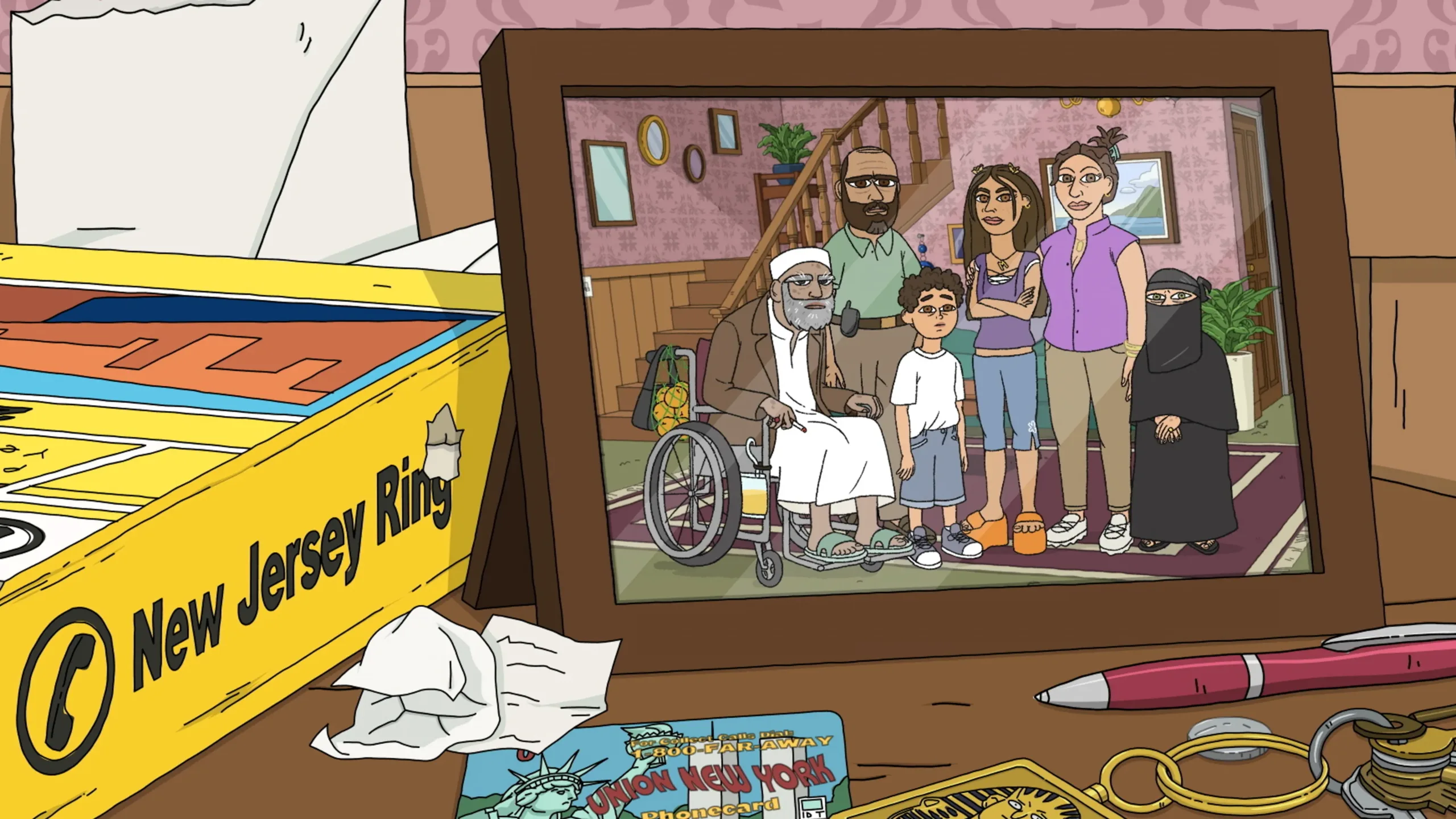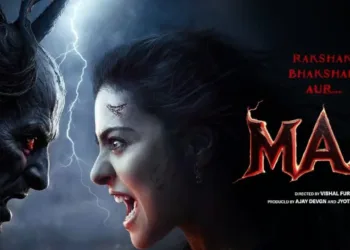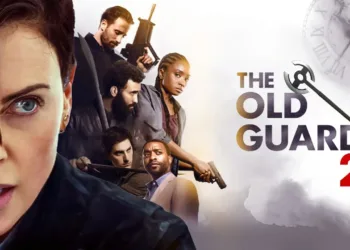Amazon Prime Video’s new adult animated comedy #1 Happy Family USA (premiering April 17, 2025) offers a provocative fusion of personal nostalgia and political satire. Co‑created by Ramy Youssef—who also voices both father and son—and South Park veteran Pam Brady, the eight‑episode season tracks the Husseins, an Egyptian‑American family in suburban New Jersey, on September 10–11, 2001. By starting one day before the attacks, the series positions adolescent rites of passage—tween crushes, coded school elections—against the looming crisis that reshaped American life and Muslim diaspora identity.
At a glance, the show’s coming‑of‑age moments echo Bollywood’s youthful exuberance, yet the narrative subverts musical traditions with darker humor, bridging trends in adult animation from Big Mouth to South Park. Visually, Mona Chalabi’s hieroglyph‑inspired character designs and bold color fields recall both Indian folk art motifs and early‑00s hand‑drawn aesthetics. Surreal flourishes—a talking lamb, literalized anxieties—underscore the family’s struggle between cultural authenticity and enforced assimilation. In its blend of humor and historical reckoning, #1 Happy Family USA stakes its own place on the map of cross‑cultural storytelling.
Anchoring Time and Place: A Family on the Edge of History
The series opens on September 10, 2001, capturing a day that feels routine—school crushes, family breakfast, Rumi’s oversized Bulls jersey—before the world shifts overnight. By positioning its pilot immediately prior to the attacks, the show borrows a technique familiar in Bollywood dramas such as Lagaan or Dev Dasi, where a pivotal historical moment reframes private conflict. Here, that pivot transforms playground anxieties into matters of life and liberty.
Geographically, the Husseins split time between suburban New Jersey and a halal cart stall outside Manhattan’s Fox News headquarters. The contrasting settings evoke the insistence on visibility and exile seen in parallel films by Mira Nair, where diasporic characters move between local neighborhoods and institutions that symbolize power. Likewise, the airport detention sequence channels the stark realism of Indian art‑house cinema, using tight framing and abrupt edits to communicate disorientation.
At home, three generations under one roof—grandparents, parents, and teens—recall family epics from Malayalam parallel cinema, where domestic dynamics mirror larger social fractures. The communal kitchen debates physics of assimilation: Hussein’s frantic redecorating in red, white, and blue faces Sharia’s quiet return to hijab, while Mona’s campaign for student council reflects community‑themed political plots in mainstream Hindi films.
Genre suggestions arrive from Big Mouth–style coming‑of‑age humor, yet the satire attacks early‑2000s Islamophobia with the sharpness of a Zoya Akhtar script. Rumi’s code‑switch transformations—morphing into a WASP or a Hogwarts student—are visual metaphors, edited with jump cuts that recall the energetic montages of Bollywood song sequences. Through these layers, the show makes clear that private rites of passage collide with national trauma on equal terms.
Voices That Bridge Worlds: Characters in Full Colour
At its heart, #1 Happy Family USA thrives on richly drawn characters whose voices carry the weight of cross‑cultural experience. Twelve‑year‑old Rumi Hussein (voiced by Ramy Youssef) channels the wide‑eyed innocence of a Bollywood child hero—think the vulnerable boys in Mira Nair’s Salaam Bombay!—while navigating very modern anxieties.
His dreams of basketball glory and a schoolboy crush on Mrs. Malcolm (Mandy Moore) pivot sharply into alienation once 9/11 strikes. Youssef’s soft‑spoken delivery crackles with wonder during fantasy sequences—when Rumi morphs into a preppy WASP or Hogwarts student—and becomes taut with sorrow in moments of ostracism, giving this animated tween a layered arc from naiveté to self‑actualization.
Hussein Hussein, the patriarch, shifts from accomplished doctor to halal‑cart vendor in a bid for safety. Youssef again steps in, imbuing “Halal Harry” with comic bravado that fractures into heartfelt song. These musical set‑pieces—reminiscent of Bollywood’s emotive playback numbers—articulate immigrant angst more directly than any dialogue. From a jaunty “Spies in the Mosque” parody to a plaintive ballad about lost credentials, his vocal range maps the cost of assimilation.
Salma Hindy’s Sharia balances Princess Diana daydreams with a return to hijab, her warm timbre turning each conversational pause into an invitation to empathy. This interplay of secular discontent and spiritual reconnection gives her a quietly complex presence, akin to parallel‑cinema women wrestling with modernity.
Teen daughter Mona (Alia Shawkat) layers ambition and secrecy, running for student council while hiding her romance. Shawkat’s restrained tone underscores Mona’s dual identity—her slick, straight‑haired Italian guise juxtaposed against her true self—mirroring code‑switch themes common in diasporic Bollywood stories.
Supporting performances enrich this tapestry: Timothy Olyphant’s jittery Agent Dan offers off‑kilter tension, while Chris Redd’s Pokémon‑obsessed friend embodies cross‑cultural camaraderie. Grandparents voiced by Randa Jarrar and Azhar Usman bring generational echoes of old‑world traditions. Together, the ensemble chemistry crackles with familial bickering and solidarity, each voice embodying the struggle to remain authentic amid survival’s demands.
Animated Aesthetics: Symbolism in Every Frame
Mona Chalabi’s character art gives each Hussein family member oversized eyes and angular features that recall Egyptian hieroglyphs and Indian folk motifs like Madhubani line work. These thick outlines and bold silhouettes evoke early‑2000s hand‑drawn cartoons, yet they also resonate with the heavy contouring seen in Bollywood title sequences of the era. The result is a hybrid look that feels both nostalgically familiar and freshly stylized.
The series’ color choices amplify emotional shifts. Suburban New Jersey backdrops employ vibrant primaries—sunny yellows, cherry reds—mirroring the saturated palettes of family dramas in mainstream Hindi cinema. In contrast, sepia‑toned flashbacks and muted grays wash over scenes of 9/11’s aftermath, as if recalling an old newsreel. During Hussein’s forced assimilation montage, bursts of red, white, and blue saturate the frame, turning patriotism into an almost dreamlike haze.
Malaysia’s Animasia studio delivers crisp movement throughout. Musical sequences glide with a fluidity more akin to a Bollywood dance number than Western adult animation, while staccato cuts punctuate comedic exchanges—rapid zooms on Rumi’s shocked face, whip pans between arguing relatives. The editing rhythm recalls the montage techniques of parallel Indian filmmakers, where quick inserts heighten both humor and pathos.
Surreal visuals become narrative shorthand: Rumi literally morphs into a WASP or Hogwarts student when code‑switching, while a talking lamb embodies his conscience. On‑screen “H for Haram” ratings, complete with mock Arabic script, play like cinematic footnotes, inviting viewers into cultural insider jokes without losing global accessibility.
Subtle homages surface—a pastel palette shift during nostalgic flashbacks nods to Clone High’s early episodes, while mix‑CD icons and Napster spoof screens evoke turn‑of‑millennium youth culture. Crucially, the show lets its style ebb and flow with each beat: distorted angles in moments of fear, soft pastels in tender family scenes—demonstrating how animation can carry both comedic flair and historical weight.
Rhythmic Turns: Balancing Levity with Gravity
Each of the eight episodes opens with a 2001 snapshot—Rumi chasing a basketball through a schoolyard, Uncle Ahmed’s arrival, Grandpa’s sudden death—before zooming out to the family’s suburban New Jersey home. These cold opens recall Mumbai street‑side vignettes in films like Gangs of Wasseypur, where a brief bite of backstory sets emotional stakes and roots the viewer in character history.
While an overarching 9/11 fallout arc binds the season, many plots feel self‑contained—from Rumi’s frantic mix‑CD panic to Mona’s student‑council speeches—echoing the anthology approach of Indian web dramas such as Lust Stories. Each compact tale reads like a mini‑feature, yet recurring motifs—family meals, code‑switch gags—tether standalone moments to the larger narrative.
Playful gags—Rumi’s cartoonish code‑switch transformations—give way to scenes of airport detentions and terror drills. The cut from a Mary Kay Letourneau–style joke to hushed hospital corridors jolts the viewer, in a way that recalls Pather Panchali’s sudden descent from childhood wonder into social hardship. These abrupt flips heighten discomfort, reminding us that humour and trauma often coincide.
Original songs such as “Spies in the Mosque” and “Money for the Meat” perform narrative work akin to Bollywood masala numbers, advancing character arcs through melody. Rumi’s dream‑state fantasies unfold in montage—his bedroom dissolving into a theatre under spotlight—demonstrating animation’s power to stretch cinematic language, much like Disney musicals or the surreal numbers in parallel cinema.
Comedic beats unfold with rapid cuts and whip pans; dramatic moments linger in wide‑angle shots where silence reverberates. This rhythmic editing feels like the heartbeat of both mainstream Bollywood features and art‑house experiments, matching each scene’s emotional tempo and sustaining momentum across eight episodes.
The pilot’s slide from normalcy into catastrophe lands with a gut punch. Midseason turning points—Mona’s coming‑out speech in a packed gym, Rumi’s solitary ostracism on the playground—chart character growth in sharp relief. The finale leaves the Husseins poised at a breaking point, their bonds taut, inviting viewers to sit with unresolved tension in the tradition of Iranian New Wave and Indian parallel drama.
Borders of Belonging: Identity Under Pressure
The tug between assimilation and authenticity drives much of the Hussein family’s struggle. Father Hussein’s frantic redecorating of the house in red, white, and blue echoes Bollywood diaspora dramas—think English Vinglish’s protagonist juggling new surroundings with old mores—while Sharia’s choice to don the hijab reclaims a private ritual. The creative decision to show Hussein blasting patriotic tunes in musical numbers underscores how cultural identity can fracture under societal fear, and how rituals of acceptance often mask deeper loss of self.
Islamophobia and xenophobia ripple through the season with unsettling clarity. The “See Something, Say Something” public‑service announcements that segue into Rumi’s surveillance‑room close‑ups recall parallel cinema’s unflinching eye—films like Fire or Earth exposed communal violence; here, animation reframes governmental suspicion as a personal horror. Placing the halal cart before News Corp and staging mock Fox News panels lampoons media framing, revealing how headlines become weapons against everyday lives.
Code‑switching emerges as survival strategy. Rumi’s classmate teaches him to literalize identity shifts—one scene morphs him into a WASP with red‑lipstick grin—visually mirroring the split‑screen montages of contemporary European art house films that show migrant self‑fashioning. Mona’s straight‑hair, Italian persona for her student‑council run traffics in performative ease, while her hidden romance undercuts the political mask she wears, exposing intersectional pressures on queer daughters of immigrants.
Tween anxieties acquire new weight under national crisis. Rumi’s puberty jitters—cited in whispered class exchanges about body hair—canvas universal rites of passage, only to be upended by airport detentions. This fast‑forwarded loss of innocence recalls Iranian New Wave classics where childhood wonder collides with authoritarian realities.
Generational dynamics sharpen the stakes. Grandparents’ old‑world admonitions clash with their grandchildren’s American schooling; sibling solidarity strains under Mona’s secret, yet tightens when shared fear unites them.
Satire of early‑2000s culture peppers the dialogue with era‑specific gags—mix‑CD piracy panic, Napster icons blinking on Rumi’s desktop, Tanner Scale jokes at a school assembly—instilling nostalgia while revealing how fleeting fads can distract from enduring social fractures.
Rhythms of Remembrance: Humor, Song and Y2K Flashbacks
The series embraces both broad slapstick—Grandpa’s thunderous bellowing, a surreal talking lamb interrupting pivotal moments—and incisive satire in its mock newscasts lampooning post‑9/11 media. Rumi’s cringe‑inducing teacher crush riffs on Bollywood rom‑com misfires, where the hero’s over‑the‑top gestures ride a fine line between sweet and unsettling. Quick cuts and exaggerated facial expressions sap tension before dropping viewers into darker territory, mirroring the tonal shifts of parallel Indian dramas that surprise with sudden laughs amid tragedy.
Music functions as narrative glue. Parody numbers like “Spies in the Mosque” echo Bollywood’s tradition of protest songs, using melody to voice immigrant frustrations, while Rumi’s rap‑style send‑up of Eminem’s “Stan”—complete with bleach‑blond hair—plays both for laughs and as a window into adolescent swagger under pressure. Recurring motifs, from a plaintive piano riff underscoring family dinners to an upbeat whistle that surfaces when the Husseins dare to hope, tie disparate episodes into a cohesive emotional arc.
Nostalgia seeps into every frame: LimeWire download alerts, Game Boy Advance screen glows, Dragon Ball Z posters in Rumi’s room. Visually, the animation nods to early‑00s Saturday‑morning cartoons with its grainy title cards, while the soundtrack mixes chiptune flourishes and scratchy pop‑punk echoes. By pairing low‑brow gags with moments of genuine tenderness, the show uses laughter as a safety valve, inviting viewers back into a fraught historical moment with warmth and wit.
Full Credits
Directors: Griffith Kimmins, Matthew Humphreys, Hannah Ayoubi
Writers: Ramy Youssef, Pam Brady, Josh Rabinowitz, Theresa Mulligan Rosenthal, Sabrina Jalees, Ahamed Weinberg, Sabrina Mahfouz, Mona Chalabi
Producers and Executive Producers: Ramy Youssef, Pam Brady, Mona Chalabi, Josh Rabinowitz, Andy Campagna, Ravi Nandan, Hallie Sekoff, Alli Reich
Cast: Ramy Youssef, Alia Shawkat, Salma Hindy, Randa Jarrar, Azhar Usman, Chris Redd, Akaash Singh, Whitmer Thomas, Mandy Moore
The Review
#1 Happy Family USA Season 1
In marrying personal memory with sharp satire, #1 Happy Family USA crafts an animated family saga that’s as heartfelt as it is irreverent. Its vivid visual style, genre‑bending tone and cultural specificity lift everyday rites of passage into a broader conversation about identity under pressure. While its tonal shifts can jar, they underscore the collision of innocence and fear that defines its premise.
PROS
- Striking, hieroglyph‑inspired animation that feels fresh and nostalgic
- Sharp, timely satire on post‑9/11 xenophobia
- Memorable musical numbers that deepen emotional impact
- Strong vocal work from Ramy Youssef, Salma Hindy, and Alia Shawkat
- Clever early‑2000s references that connect with younger and older viewers
CONS
- Tonal shifts can be abrupt and disorienting
- Occasional subplot overload leaves some arcs underexplored
- Rumi’s storyline takes a few episodes to fully engage
- Broad slapstick sometimes undercuts subtler moments


























